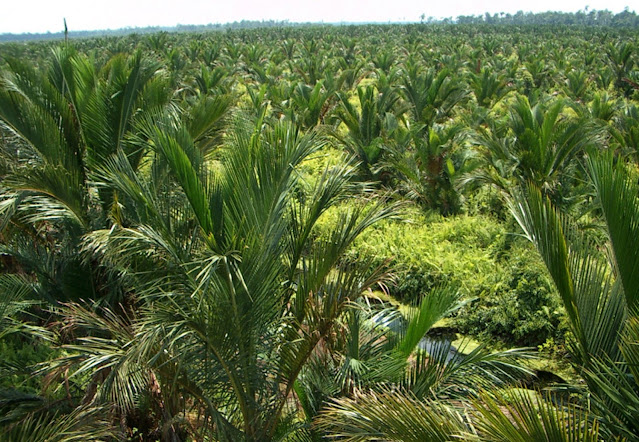- Agrosilvopasture; form of land use by combining agricultural crops, forest / perennial crops and fodder plants associated with livestock raising.
- Silvopasture; a form of land use by combining forest plants and livestock.
- Agrosilvofishery; a form of land use by combining food crops, forest / annual plants and fisheries.
- Silvofishery or forest ponds; a form of land use by combining forest plants and fisheries. An example that has been widely practiced in Indonesia is pond forests in mangrove areas.
- Yard (Home garden); a traditional agroforestry system which is a harmonious blend of perennial crops and food plants around the houses of rural communities in general.
- Mixed garden; a land planted with annual crops and food crops. After several years, only a small portion of the land could be planted with food crops due to the influence of the shade of the annual crops.
- Talun (mixed tree garden); a traditional agroforestry system where the land has been cleared for several years and annual crops are dominant, etc.
What are the variations in the elements in agroforestry?
- combination of perennials (long term: trees) with seasonal crops (short term agriculture)
- combination of main crops (food sources, economic commodities) with by-crops
- mix of crops with supporting crops (for example coffee or cocoa, with shade trees)
- mix of plants with different seasons or harvesting ages: field rice, cucumber, coffee, damar matakucing, durian.
- a combination of tree management with fisheries (ponds, balong, embung), also known as silvofishery
- combination with livestock raising (silvopasture) or beekeeping: forests as a producer of animal feed or bees, such as in Sumbawa, Indonesia.
Can you give examples of agroforestry application?
Several Agroforestry Models from various Regions in Indonesia
|
No |
Old model |
Area |
Agroforestry concept |
|
1 |
Shifting cultivation |
All regions |
Agrisilviculture |
|
2 |
Feeding system with trees and shrubs |
All regions |
Agrosilvopastoral |
|
3 |
Intercropping |
All regions |
Agrosilviculture |
|
4 |
Yard |
All regions |
Agrosilviculture |
|
5 |
Coffee and Tephrosia candida |
South Sulawesi, Flores |
Agrosilviculture |
|
6 |
Exploitation of forest plants |
Kalimantan, Sumatra, Sulawesi |
Agrosilviculture |
|
7 |
Sweet potatoes under the Sago tree |
Irian |
Agrosilviculture |
|
8 |
Forest above rice fields |
Sulawesi |
Agrosilviculture |
|
9 |
Mixed garden |
Almost all regions |
Agrosilviculture |
|
10 |
Turi on the paddy fields |
Bali, NTB, NTT |
Agrosilviculture |
|
11 |
Talun Garden |
West Java |
Agrosilviculture |
|
12 |
Mamar |
Timor, Rote, Sabu |
Agrosilviculture |
|
13 |
Fruit orchard |
Bali, East Java |
Agrosilviculture |
|
14 |
Coffee garden with dadap |
All regions |
Agrosilviculture |
|
15 |
Coffee plantation with Albizia |
All regions |
Agrosilviculture |
|
16 |
(Paraserianthes) as a shade tree |
All regions |
Agrosilviculture |
|
17 |
Integration of timber in the garden |
Flores |
, Agrosilviculture |
|
18 |
Ongeng, Kopo |
Flores and many other areas in Indonesia |
Agrosilviculture |
|
19 |
Vanilla with gamal |
Flores, Timor, Sumba |
Agrosilviculture |
|
20 |
The lamtoro array |
Timor |
Silvopastoral |
|
21 |
Lamtoro forest for food |
Flores, Timor |
Agrosilviculture |
|
22 |
Another legume crop |
Bali |
Silvopastoral |
|
23 |
Three level system |
Flores, Timor |
Agrosilviculture |
|
24 |
Family forest |
Timor |
Agrosilviculture |
|
25 |
Spruce and Food Plants |
NTB, Kalimantan, Irian |
Agrosilviculture |

